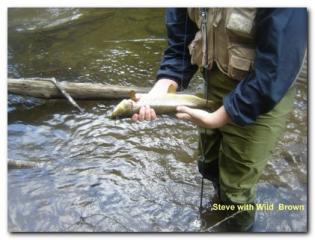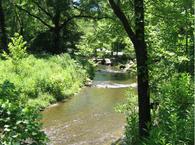
In this class, the importance of, and the necessity for the catch and release efforts to preserve our trout resources will be discussed. The student will learn to handle trout to safely release them, saving our natural resources. Upon completion, the student should be able to complete his fishing trip and be confident that the trout will survive, better educated.
TroutU promotes catch and release fishing, to preserve the sport and the fish for the future. As such, we offer the following suggestions regarding playing and landing fish. If you decide to keep any fish, we recommend keeping only stocked fish (versus stream bred fish or wild fish).
In any case, always be sure to release large fish to preserve the best breeding stock. Once a fish strikes, it is important to reel the fish in as quickly as possible, to avoid hurting the fish. For small fish this is simply a matter of reeling them in directly. For larger fish, you may have to let them expend enough energy that you can reel them in. (Being careful the reel’s drag is set properly.) Once the fish is reeled in, wet your hands before handling the fish. This is very important as it will prevent the fish’s protective slime from coming off while you handle it. Also, particularly on small fish, you may not have to even touch the fish – just grab the hook and back it quickly out of the fish’s mouth. If you do have to hold the fish, you should keep it in the water as much as possible. Often times, holding the fish upside down in the water calms the fish, allowing you to remove the hook easier. After you unhook fish that has been exhausted, gently rock the fish back and forth in the water. This allows oxygenated water to pass thru the gills, reviving the fish; and allowing it to swim away.
Read this about delayed harvest and catch and release for that situation.
Further study on handling & releasing:
Of course, you should be prepared to photograph your trophy trout.More





